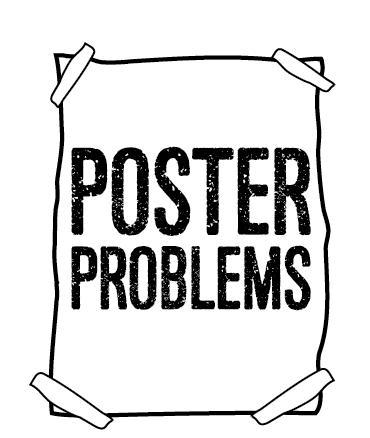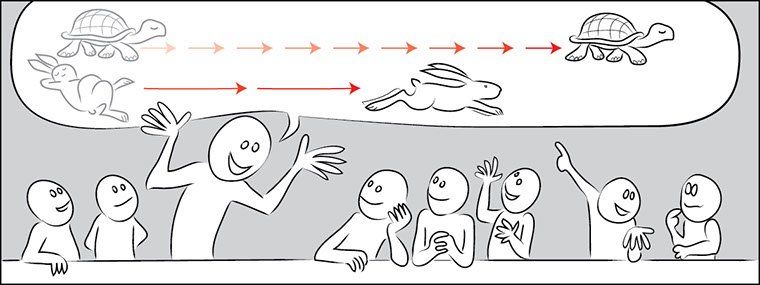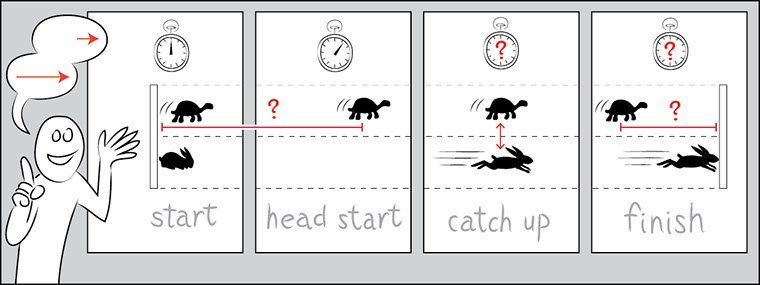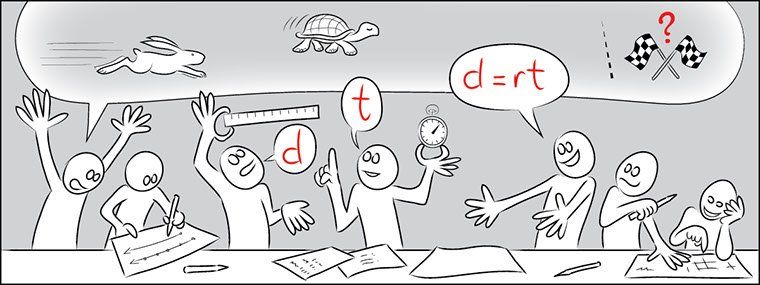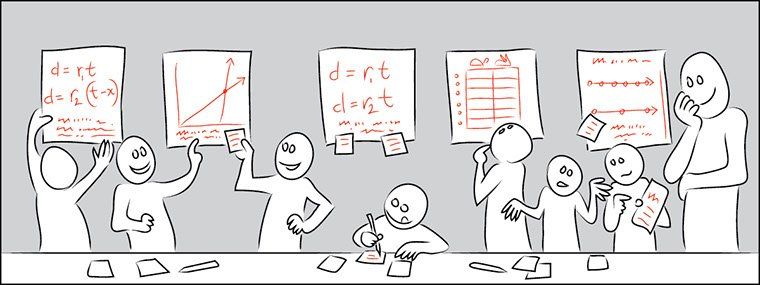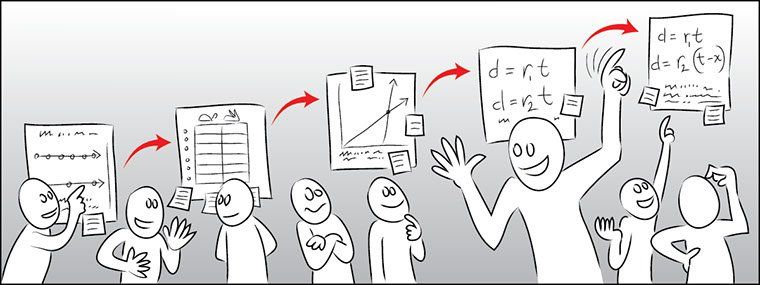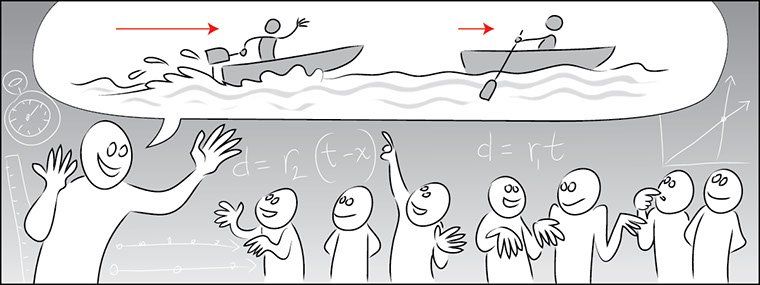Each Poster Problem has Six Phases:
Listen to teacher Norm Mattox
talk through the phases.
In a series of videos, mathematics educator Phil Daro
explains the rationale of this approach.
A leading thinker in mathematics education, Professor Alan Schoenfeld
weighs in on sense-making, teacher knowledge, and the Common Core.
Project funding provided by The William and Flora Hewlett Foundation and S.D. Bechtel Jr. Foundation.
This work is licensed under a Creative Commons Attribution-NonCommercial-ShareAlike 4.0 International License.
